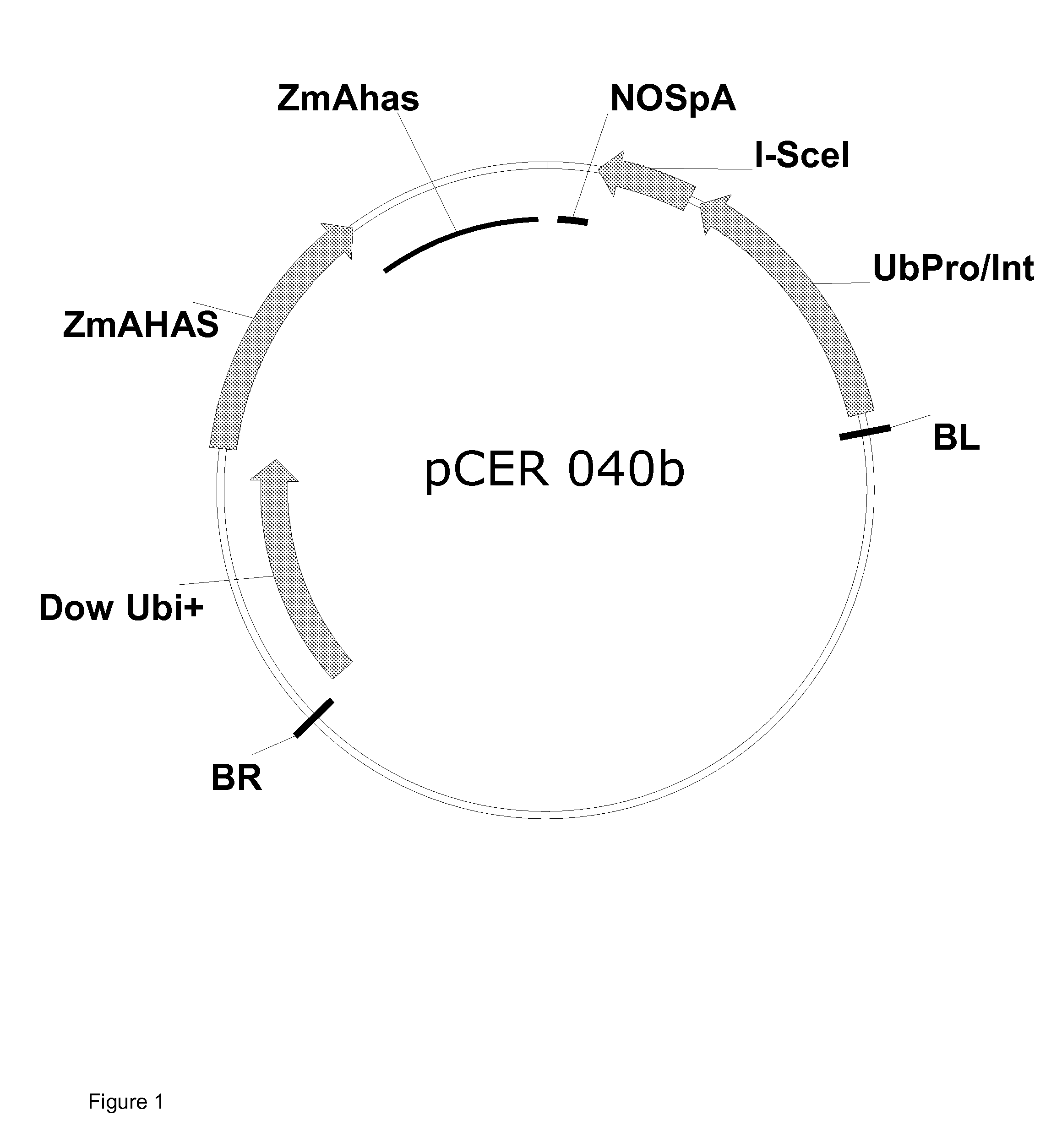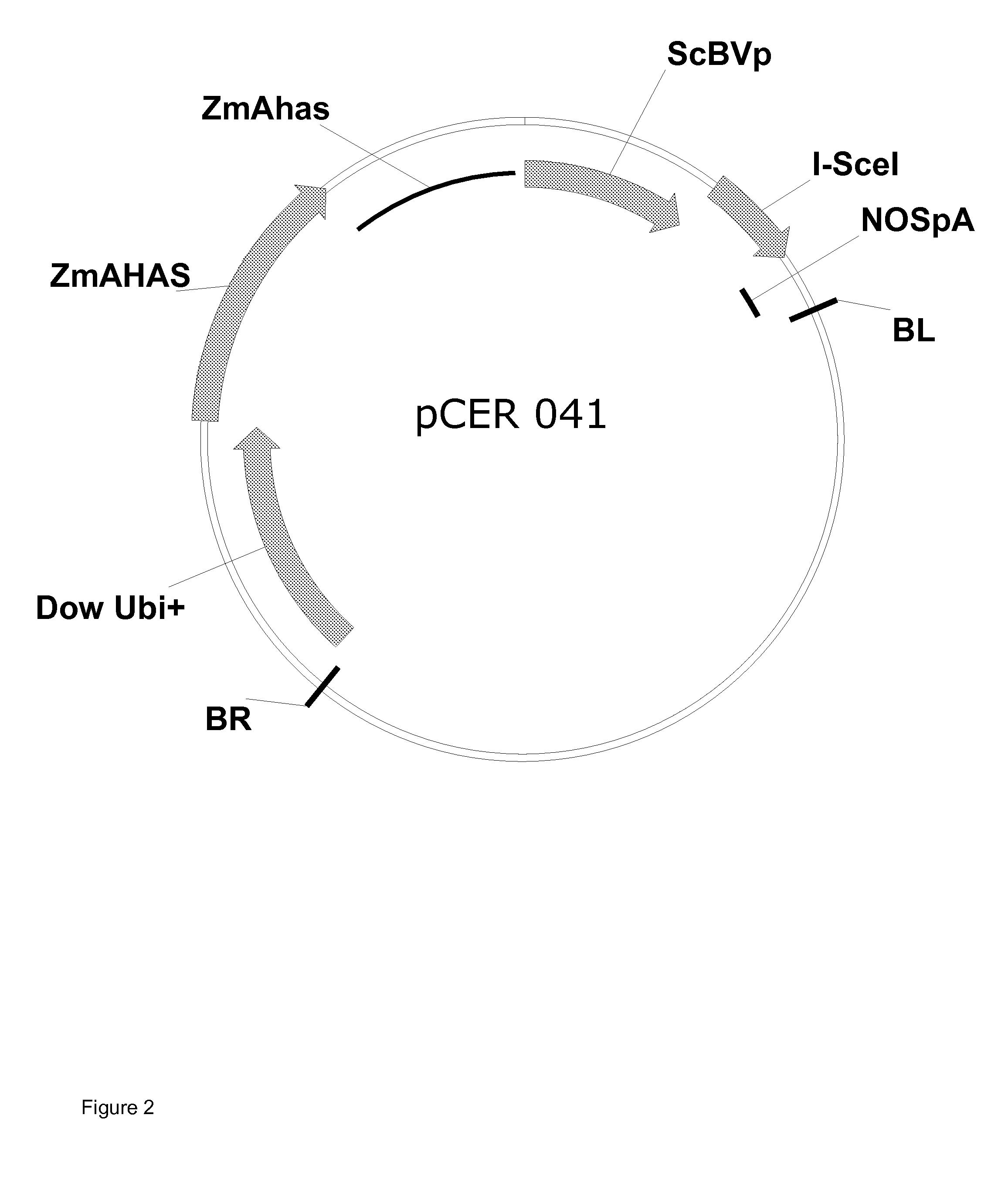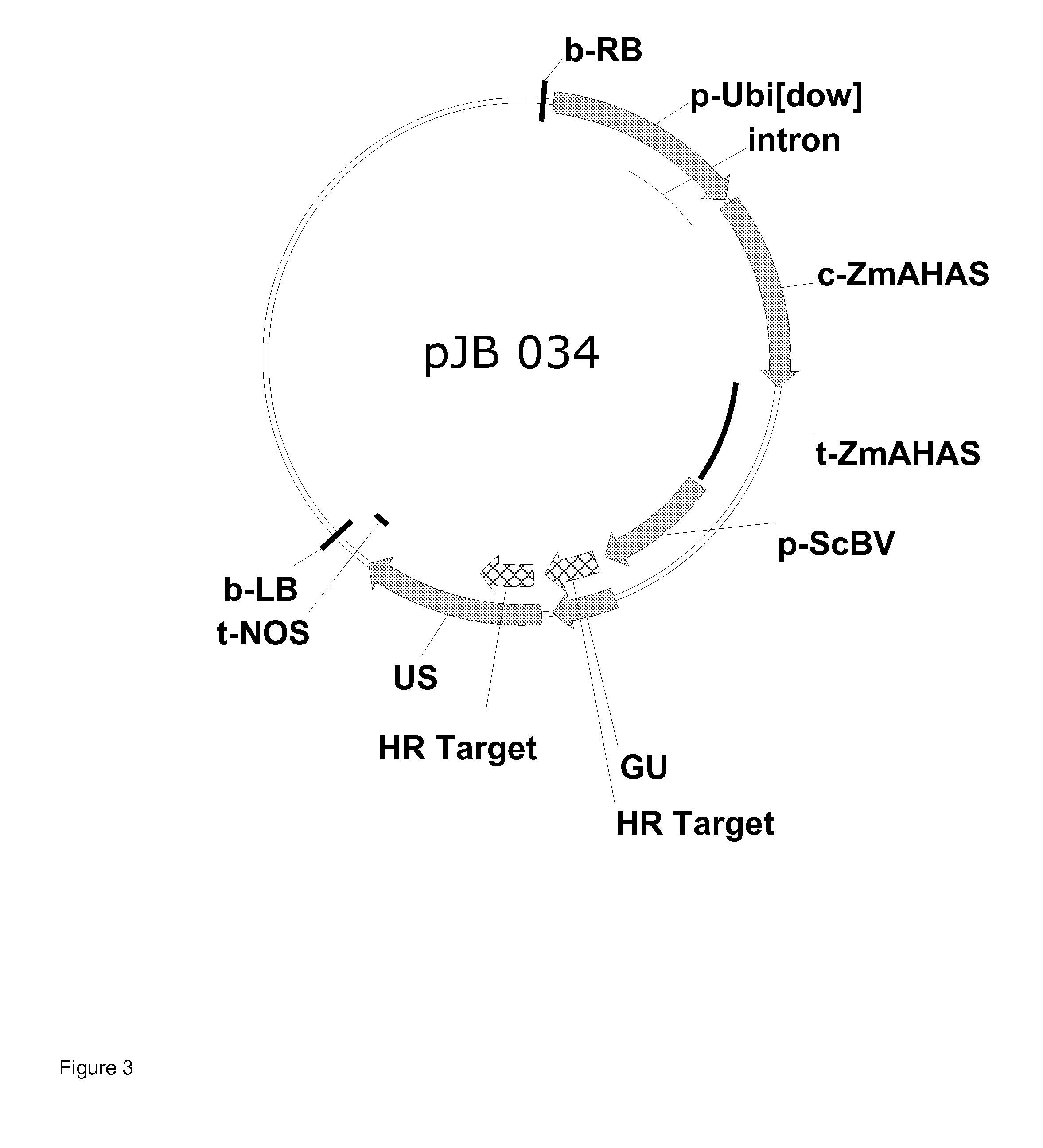Method Of Excising A Nucleic Acid Sequence From A Plant Genome
genome technology, applied in the field of method of excising a nucleic acid sequence from a plant genome, can solve the problems of lack of acceptance, product among consumers, and the lack of useful functions of selectable marker genes, so as to improve public acceptance, facilitate retransformation, and increase the ease of multiple traits
- Summary
- Abstract
- Description
- Claims
- Application Information
AI Technical Summary
Benefits of technology
Problems solved by technology
Method used
Image
Examples
examples
Materials and General Methods
[0257]Unless indicated otherwise, chemicals and reagents in the Examples were obtained from Sigma Chemical Company (St. Louis, Mo.), restriction endonucleases were from New England Biolabs (Beverly, Mass.) or Roche (Indianapolis, Ind.), oligonucleotides were synthesized by MWG Biotech Inc. (High Point, N.C.), and other modifying enzymes or kits regarding biochemicals and molecular biological assays were from Clontech (Palo Alto, Calif.), Pharmacia Biotech (Piscataway, N.J.), Promega Corporation (Madison, Wis.), or Stratagene (La Jolla, Calif.). Materials for cell culture media were obtained from Gibco / BRL (Gaithersburg, Md.) or DIFCO (Detroit, Mich.). The cloning steps carried out for the purposes of the present invention, such as, for example, restriction cleavages, agarose gel electrophoresis, purification of DNA fragments, transfer of nucleic acids to nitrocellulose and nylon membranes, linking DNA fragments, transformation of E. coli cells, growing b...
PUM
| Property | Measurement | Unit |
|---|---|---|
| time | aaaaa | aaaaa |
| temperatures | aaaaa | aaaaa |
| concentration | aaaaa | aaaaa |
Abstract
Description
Claims
Application Information
 Login to View More
Login to View More - R&D
- Intellectual Property
- Life Sciences
- Materials
- Tech Scout
- Unparalleled Data Quality
- Higher Quality Content
- 60% Fewer Hallucinations
Browse by: Latest US Patents, China's latest patents, Technical Efficacy Thesaurus, Application Domain, Technology Topic, Popular Technical Reports.
© 2025 PatSnap. All rights reserved.Legal|Privacy policy|Modern Slavery Act Transparency Statement|Sitemap|About US| Contact US: help@patsnap.com



